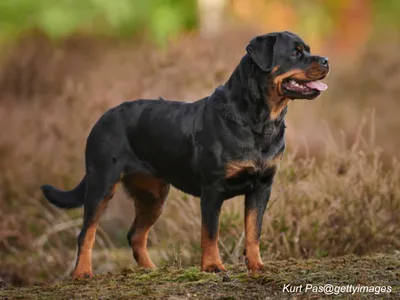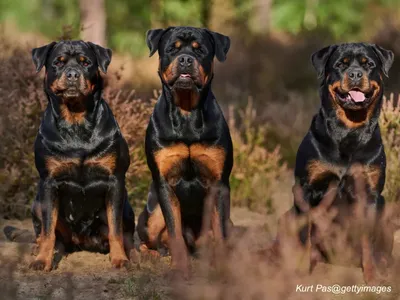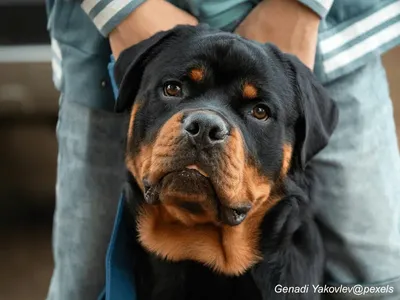Rottweiler
AKC & CKC Working Group
Origin & History
The Rottweiler is one of the oldest herding breeds, with origins dating back to the Roman Empire. Roman armies used Rottweiler ancestors to drive and guard cattle as they traveled through Europe. In the German town of Rottweil, these dogs became known as "Rottweiler Metzgerhund" (Butcher's Dogs), as they protected butchers' money pouches tied around their necks.
Nearly extinct by the late 1800s, the breed was revived in Germany and first exhibited in 1914. Rottweilers served in both World Wars as messenger, ambulance, and guard dogs. Today they rank among the most popular breeds worldwide, valued as police dogs, service animals, and loyal family companions.
Modern Rottweilers maintain their working heritage while forming deep bonds with their families. Their intelligence and versatility make them excel in various working roles and dog sports.
Stats:
- Height: 22-27 inches
- Weight: 80-100 | 95-135 pounds
- Coat: Short, dense double coat with straight outer hairs
- Colors: Black with clearly defined rust/tan markings
- Lifespan: 9-10 years
| Traits: | 1 | 2 | 3 | 4 | 5 |
|---|---|---|---|---|---|
| Energy: High energy; needs vigorous daily exercise and mental stimulation | ✓ | ||||
| Easy To Train: Highly intelligent and eager to work; responds well to training | ✓ | ||||
| Grooming: Low maintenance; weekly brushing and occasional baths | ✓ | ||||
| Family Dog: Devoted to family; excellent with children when properly socialized | ✓ | ||||
| Watchdog: Natural protector; excellent guard dog instincts | ✓ | ||||
| Beginner Friendly: Not recommended for novice owners; needs experienced handling | ✓ | ||||
| Prey Drive: Moderate to high; may chase small animals | ✓ | ||||
| Barking: Moderate; typically only barks when necessary | ✓ | ||||
| Good with other dogs: Good, if properly socialized; strong guarding instincts & dominance may lead to aggression with unfamiliar or same-sex dogs. | ✓ |
Health Concerns:
- Hip Dysplasia: Common in large breeds
- Elbow Dysplasia: Joint development abnormality
- Heart Conditions: Including subaortic stenosis
- Osteosarcoma: Bone cancer common in large breeds
- Cruciate Ligament Rupture: Knee injury risk
- Entropion/Ectropion: Eyelid abnormalities
- Juvenile Laryngeal Paralysis & Polyneuropathy (JLPP): Eyelid abnormalities
Please check the Canine Health Information Center (CHIC) and parent breed clubs for health information.
Glossary of general canine health conditions.



